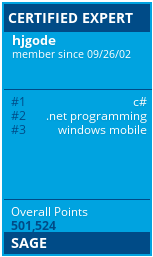Horstbox Pro: unerwünschte Anrufe blockieren
Nachdem unbekannte Anrufer innerhalb der extensions.conf blockiert sind, habe ich die Asterisk extensions.conf auf der HorstBox Pro DVA-G3342 noch um einige Nummern erweitert.
Leider wurde das Gesetzt zu diesen Werbeanrufen so abgeschwächt, dass man als Verbraucher kaum eine Chance hat, aus den Anruflisten der Werbe-Haie zu entkommen.
Werbeanrufer sind doch sehr hartnäckig und durch das Sperren der Rufnummern werden diese unerwünschten Anrufe blockiert.
Meine neue extensions.conf sieht nun so aus:
Continue reading ‘Horstbox Pro: unerwünschte Anrufe blockieren’ »




 http://www.led-mg.de
http://www.led-mg.de